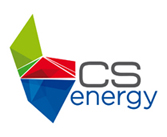Hydrogen is widely recognised as one of the ways in which heavy-duty industries such as agriculture, transport and aviation are able to decarbonise and is therefore an exciting prospect for meeting the world’s future energy needs.
Hydrogen is the most common chemical element in the world. It can be produced in liquid or gas form and can be used as:
- fuel for heating or transport
- a raw material in industrial processes
- a way to store electricity
Queensland has been prioritised as a key location for renewable hydrogen projects due to our skilled workforce, our ports and of course our sunny climate.
While there is understandable discussion about the environmental impact of hydrogen, it largely comes down to a question of which ‘colour’ of hydrogen we are talking about.
Hydrogen is categorised into colours largely to describe how it has been produced. For example, grey hydrogen uses gas, brown hydrogen is made using coal and blue hydrogen is produced using gas and carbon capture and storage to reduce emissions.
At CS Energy, we’re investing in green hydrogen which is produced using an electrolyser powered by renewable energy.
We invest in green hydrogen for a range of reasons, including it being:
- A “clean” energy source: Put simply, this means that during its production there are no harmful gasses emitted. The by-products of green hydrogen also aren’t harmful.
- Transportable: Green hydrogen is transportable and ready to use in the natural gas distribution network when mixed with correct ratios of natural gas. Green hydrogen is also able to be transported in gas or liquid form to be used in hydrogen fuel cell electric vehicles including heavy transport vehicles like trucks and busses.
- Sustainable: Because it doesn’t emit any harmful gasses during its production and usage, green hydrogen is considered a sustainable form of energy.
- Storable: In other words, green hydrogen can be used when and as needed.
- Versatile: As outlined above, green hydrogen can be transformed into gas or electricity making it incredibly versatile.
Examples of projects using green hydrogen include:
- CS Energy Kogan Renewable Hydrogen Demonstration Project https://csenergytomorrow.com.au/what-is-kogan-renewable-hydrogen-project/
- QUT hydrogen project (CS Energy is a project partner) https://www.csenergy.com.au/what-we-do/hydrogen/qut-hydrogen-project
Learn more here https://www.csenergy.com.au/what-we-do/hydrogen
-
- Yellow hydrogen: Refers to hydrogen that is made using electrolysis powered by solar energy. It can also be used to describe electrolysed hydrogen created from a mix of renewables and fossil fuel power.
- Turquoise hydrogen: For this form of hydrogen, the production process involves a method called methane pyrolysis, which splits methane from natural gas into hydrogen and solid carbon, also known as “carbon black”. Carbon black is a critical raw material with a range of applications such as making car tyres, coatings and batteries. While this hydrogen production method does not produce direct CO₂ emissions, the mining and transport of natural gas does.
- White hydrogen: This describes a naturally occurring hydrogen found in underground deposits, which can often be accessed by drilling a well. Exploratory projects are being conducted in Brazil, Australia and other parts of the world. Although white hydrogen is a carbon-free fuel, the environmental impact of the extraction methods must also be considered.
- Pink (red/purple) hydrogen: Similar to green hydrogen, the production of pink hydrogen differs because the electrolysis is powered not by renewable electricity but by nuclear energy. The first commercial deal was signed in January 2022 and will see a Swedish nuclear power plant deliver pink hydrogen to industrial gas giant Linde. Hydrogen production using nuclear power is also sometimes referred to as purple or red hydrogen.

